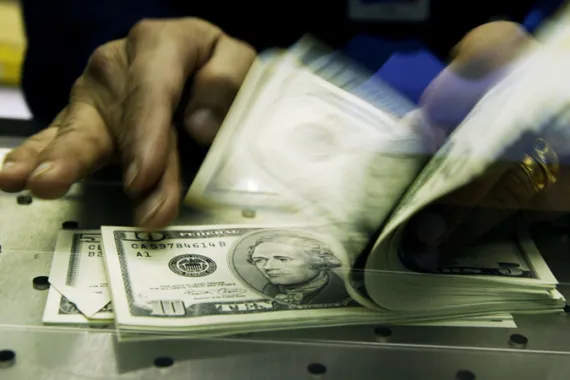The US dollar is facing its steepest decline in over five decades, driven by mounting concerns over President Donald Trump’s economic policies and their impact on investor confidence, Al Jazeera reports.
According to financial analysts, the greenback’s status as a global safe haven is under growing scrutiny.
In the first half of 2025, the dollar index—a key measure of the currency’s value against a basket of major peers—dropped 10.8%, marking its worst start to a year since 1973. The decline has been linked to market uncertainty stemming from trade tensions, fiscal expansion, and growing concerns over US debt sustainability.
One of the main catalysts was the Trump administration’s abrupt rollout of broad tariffs in April, which disrupted global markets and triggered a sharp sell-off in US assets. Equity markets lost over $5 trillion in value in the days following the announcement, while US Treasuries also saw significant outflows, raising borrowing costs for the federal government.
Although a temporary 90-day pause was later introduced—excluding China—investor sentiment has remained fragile. Moody’s downgraded the US credit rating in May, and the OECD revised its US growth forecast downward to 1.6% for 2025, citing weaker investment and policy instability.
At the center of investor anxiety is President Trump’s proposed “One Big Beautiful Bill Act,” which includes extensions of his 2017 tax cuts, new spending cuts, and a projected $3.3 trillion increase in federal debt over the next decade. The Congressional Budget Office estimates that the legislation would push the US debt-to-GDP ratio well beyond its current 124%.
While the Trump administration defends its approach as pro-growth, critics argue that it risks undermining the global perception of US fiscal discipline and the dollar’s long-standing dominance. Central banks, meanwhile, are increasing their gold purchases as a hedge against potential dollar devaluation.
The Federal Reserve, under pressure from the White House, has so far resisted calls to lower interest rates. However, expectations of multiple rate cuts later this year have added to downward pressure on the dollar. Fed Chair Jerome Powell recently acknowledged that the central bank would likely have cut rates by now if not for the current economic uncertainty.
Despite the dollar’s historic influence in global trade and finance—serving as the denomination for over half of international exports and nearly 60% of global reserves—experts say its premium is increasingly being questioned.
“The US has become a less attractive place to invest these days,” said Karsten Junius, chief economist at Bank J. Safra Sarasin. “Investors are beginning to realize that they’re overexposed to US assets.”
Foreign investors currently hold an estimated $19 trillion in US equities, $7 trillion in Treasuries, and $5 trillion in corporate bonds. If market participants continue trimming their exposure, the dollar could face sustained depreciation.
Globally, the dollar’s decline has been a mixed bag. Developing nations with large dollar-denominated debt burdens, such as Zambia and Pakistan, are benefiting from lower repayment costs. Exporters of commodities like oil and metals—whose prices often rise with a weaker dollar—are also gaining ground.
Meanwhile, the euro has appreciated by 13% this year, as investors seek more stable alternatives. European equities have also benefited from the shift, with the Stoxx 600 index up about 15% in local terms—and 23% when converted into dollars.
Though inflation in the US has moderated—from 3% in January to 2.3% in May—economic uncertainty persists.










The latest news in your social feeds
Subscribe to our social media platforms to stay tuned